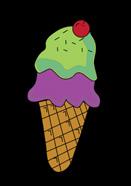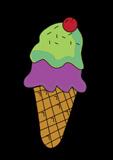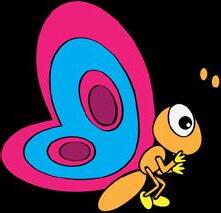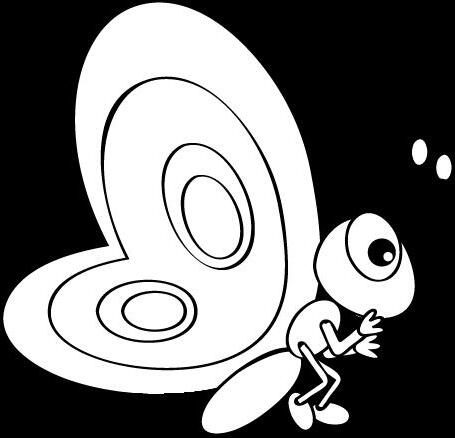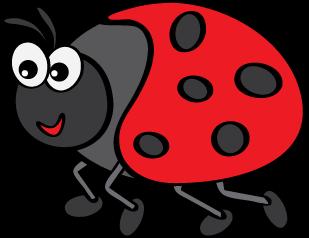Term 2
Grade 3
Name: Class: Mathematics Workbook 2
Owned and published by Optimi, a division of Optimi Central Services (Pty) Ltd.
7 Impala Avenue, Doringkloof, Centurion, 0157 info@optimi.co.za www.optimi.co.za
© Optimi
Apart from any fair dealing for the purpose of research, criticism or review as permitted in terms of the Copyright Act, no part of this publication may be reproduced, distributed, or transmitted in any form or by any means, electronic or mechanical, including photocopying, recording, or any information storage and retrieval system without prior written permission from the publisher.
The publisher has no responsibility for the persistence or accuracy of URLs for external or third-party internet websites referred to in this publication, and does not guarantee that any content on such websites is, or will remain, accurate or appropriate.
There are instances where we have been unable to trace or contact the copyright holder. If notified, the publisher will be pleased to rectify any errors or omissions at the earliest opportunity.
Reg. No.: 2011/011959/07
Mathematics
Workbook 2
Term 2
Grade 3
SAMPLE
Estimate how many items there are and then count them. I estimate: ___________ I count: ___________ I estimate: ___________ I count: ___________
Activity 2
Date:
Write the number name next to the number symbol.
Number symbol
a) 106
b) 133
c) 157
d) 184
e) 200
f) 212
g) 229
h) 250
Activity 3
Number name
Date:
Write the number symbol next to the number name.
a) A hundred and nineteen _____
b) Two hundred and twenty-±ve _____
c) Four hundred and forty-two _____
d) Three hundred and sixty-seven_____
e) Five hundred and ninety-four _____
f) Six hundred and seventy-eight _____
g) Eight hundred and ninety-one _____
h) Two hundred and thirty-two _____
i) Nine hundred and eighty-six _____
j) Seven hundred and thirteen _____
k) Five hundred and seven _____
l) Eight hundred and ±fty-seven _____
m) Three hundred and ten _____
n) Nine hundred and ninety-nine _____
Activity 4
Date: Break down the numbers.
Write down the number represented by the coloured blocks.
Activity 5
Date: Complete the table. Break down the numbers in tens and ones.
a) 57 b) 29 c) 83 d) 16
e) 44
f) 60
Activity 6
a) 67 + 22 = ______
b) 34 + 30 = ______
c) 27 + 12 = ______
d) 81 + 18 = ______
e) 53 + 45 = _____
f) 45 + 33 = ______
Date:
Use the methods below to add or subtract the tens and ones to get the answer. h) 82 – 61 = ______ i) 76 – 43 = ______ j) 98 – 12 = ______ k) 69 – 48 = ______ l) 47 – 40 = _____ m) 55 – 32 = ______ n) 34 – 21 = ______
g) 74 + 15 = ______
Activity 7
Date:
There is an easier way to write the sums. Write the two numbers on top of each other.
Activity 8
Date:
Break down the numbers. Remember to add the hundreds.
Write down the number represented by the coloured blocks.
198 265 470 314
Activity 9
Date:
You know how to work with tens and ones. Now try to add the hundreds.
Activity 10 Date:
Break down the numbers in hundreds, tens and ones.
Hundreds Tens Ones
a) 118
b) 332
c) 290
d) 457
e) 314
f) 262
g) 103
h) 221
i) 485
Activity 11 Date:
Complete the missing numbers. Make sure you use the hundreds, tens and ones correctly.
a) 167 = 100 + ______ + 7
b) 289 = ______ + 80 + 9
c) 325 = 300 + 20 + ______
d) 436 = 400 + ______ + 6
e) 192 = ______ + 90 + 2
Activity 12
f) 345 = 300 + ______ + ______
g) 441 = ______ + 40 + ______
h) 287 = ______ + ______ + 7
i) 128 = 100 + ______ + ______
j) 404 = ______ + ______ + ______
Count on. 435; ______; ______; ______; ______; ______; ______; ______
Count back. 500; ______; ______; ______; ______; ______; ______; ______
Activity 13
Complete the addition sums.
a) 100 + 40 + 6 = ______
b) 200 + 30 + 1 = ______
c) 100 + 50 + 7 = ______
d) 400 + 90 + 3 = ______
e) 300 + 60 + 8 = ______
Activity 14
Complete the number bonds of 30.
Date:
f) 200 + 70 + 2 = ______
g) 300 + 0 + 9 = ______
h) 100 + 60 + 4 = ______
i) 400 + 20 + 8 = ______
j) 300 + 80 + 0 = ______
Date:
Activity 15 Count on in 2s. 378; ______; ______; ______; ______; ______; ______; ______
Count back in 2s. 498; ______; ______; ______; ______; ______; ______; ______
Activity 16
Week 12
Date:
Method 3: Break down both numbers to make the calculations easier.
243 + 136 = 243 + 136 = (200 + 40 + 3) + (100 + 30 + 6) = (200 + 100) + (40 + 30) + (3 + 6) = 300 + 70 + 9 = 379
a) 232 + 245 =
Remember, you now add hundreds too!
b) 145 + 354 =
c) 281 + 115 =
d) 325 + 123 =
Activity 17
a) 16 + 17 = _____
b) 22 – 15 = _____
c) 34 + 28 = _____
d) 11 + 39 = _____
e) 34 – 26 = _____
f) 24 – 18 = _____
g) 31 + 45 = _____
h) 54 – 27 = _____
i) 45 + 22 = _____
Complete the sums as quickly as possible. Activity 18
Circle the smallest number.
Circle the greatest number.
Activity 19
Date:
Method 3: Break down the tens and ones to make the calculations easier.
a) 275 + 24 =
b) 357 + 31
Take care not to add the tens to the hundreds.
Activity 20
Fill in the correct symbols.
a)
b)
c)
d)
e)
Activity 21
Date:
Activity 22
Date:
Method 3: Break down one number to make the calculations easier.
323 + 172 =
323 + (100 + 70 + 2)
323 + 100 → 423 + 70 → 493 + 2 = 495
a) 315 + 142 =
Was it easy?
b) 454 + 122 =
c) 254 + 153 =
Think carefully when you do the sum.
Activity 23
Complete the table.
Activity 24
Order the numbers from small to great.
Date:
Order the numbers from great to small.
Date:
Activity 25
Count on in 3s.
Activity 26
Complete the sums as quickly as possible.
a) 70 – 40 = _____
b) 60 + 60 = _____
c) 120 – 50 = _____
d) 30 + 110 = _____
e) 90 – 80 = _____
Date:
f) 20 + 130 = _____ g) 80 + 70 = _____ h) 100 – 40 = _____ i) 160 + 10 = _____
Activity 27
110 – 90 = _____
120 + 60 = _____
q) 190 – 50 = _____
r) 60 + 90 = _____
s) 130 – 60 = _____ t) 140 + 10 = _____
u) 90 – 90 = _____
30 + 90 = _____
100 + 90 = ____
80 – 20 = _____
Do you know how to round off numbers?
Date:
v) 50 + 60 = _____ w) 160 – 70 = _____ x) 90 + 80 = _____
y) 150 – 90 = ____ z) 80 + 60 = _____
When we round to the nearest 10, we check to see if the number is nearer to 20 or 30.
Always choose the greatest number. In this case it is 30.
Round the numbers.
What happens with 25, which is exactly in the middle?
23 ___ c) 21 _____ e) 25 _____ b) 28 ___ d) 24 _____ f) 29 _____
• Easy to teach daily lessons for the whole year.
• Three sessions a day combining the different learning areas.
• Fun oral, practical, and written activities to introduce new concepts.
• Complete full-colour facilitator aid, learner aid, and a workbook for each term.
• Comprehensive explanations of concepts in plain language.
• Use in school or at home.
home classroom college workplace














